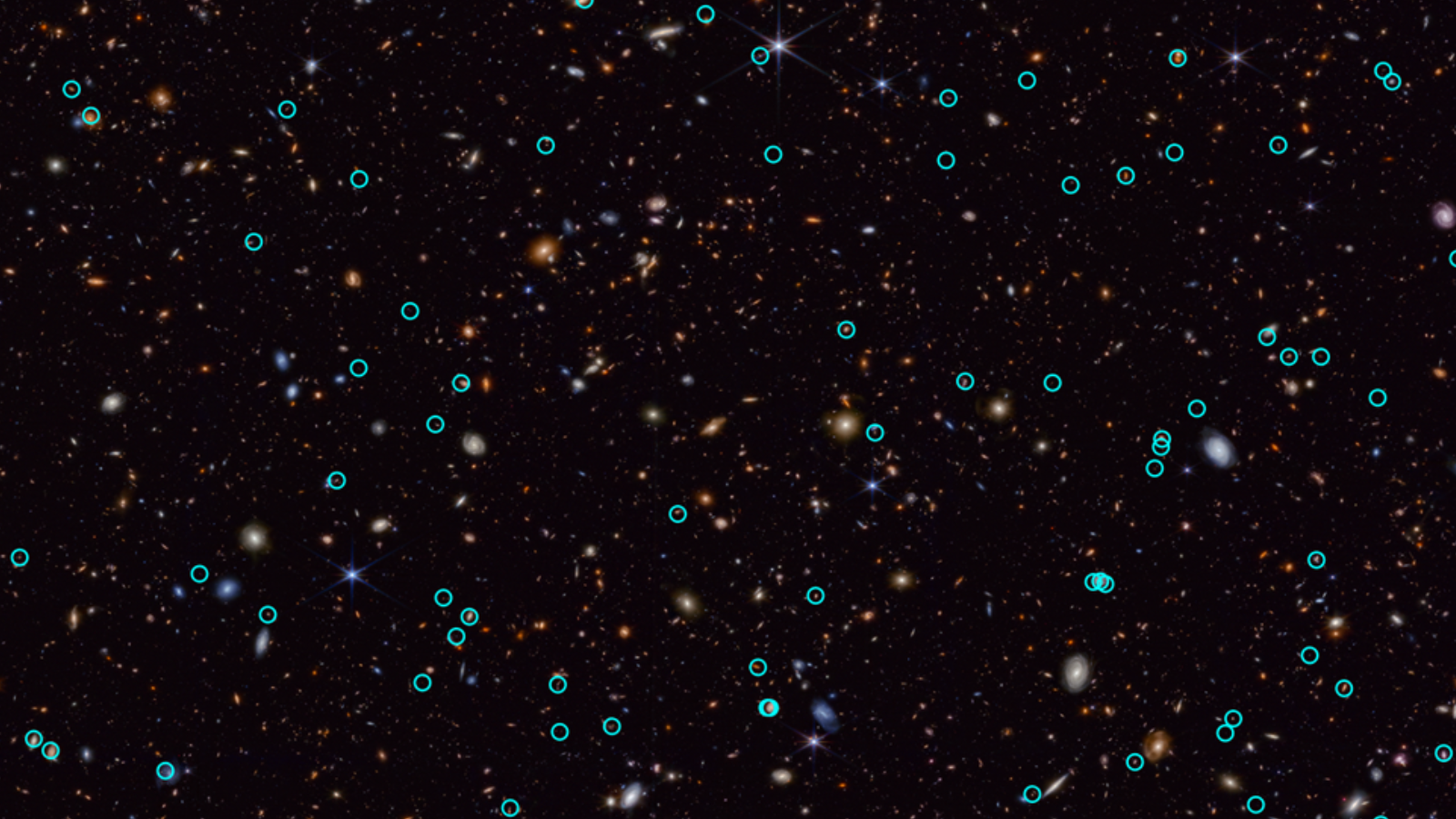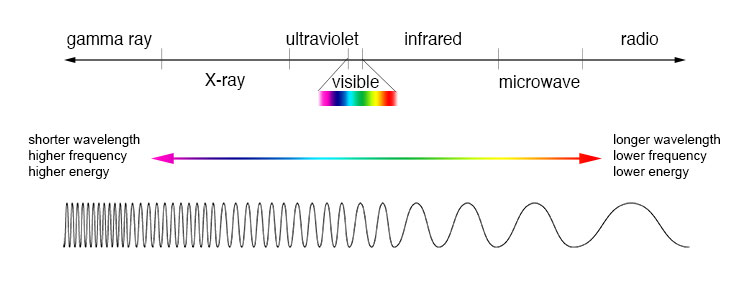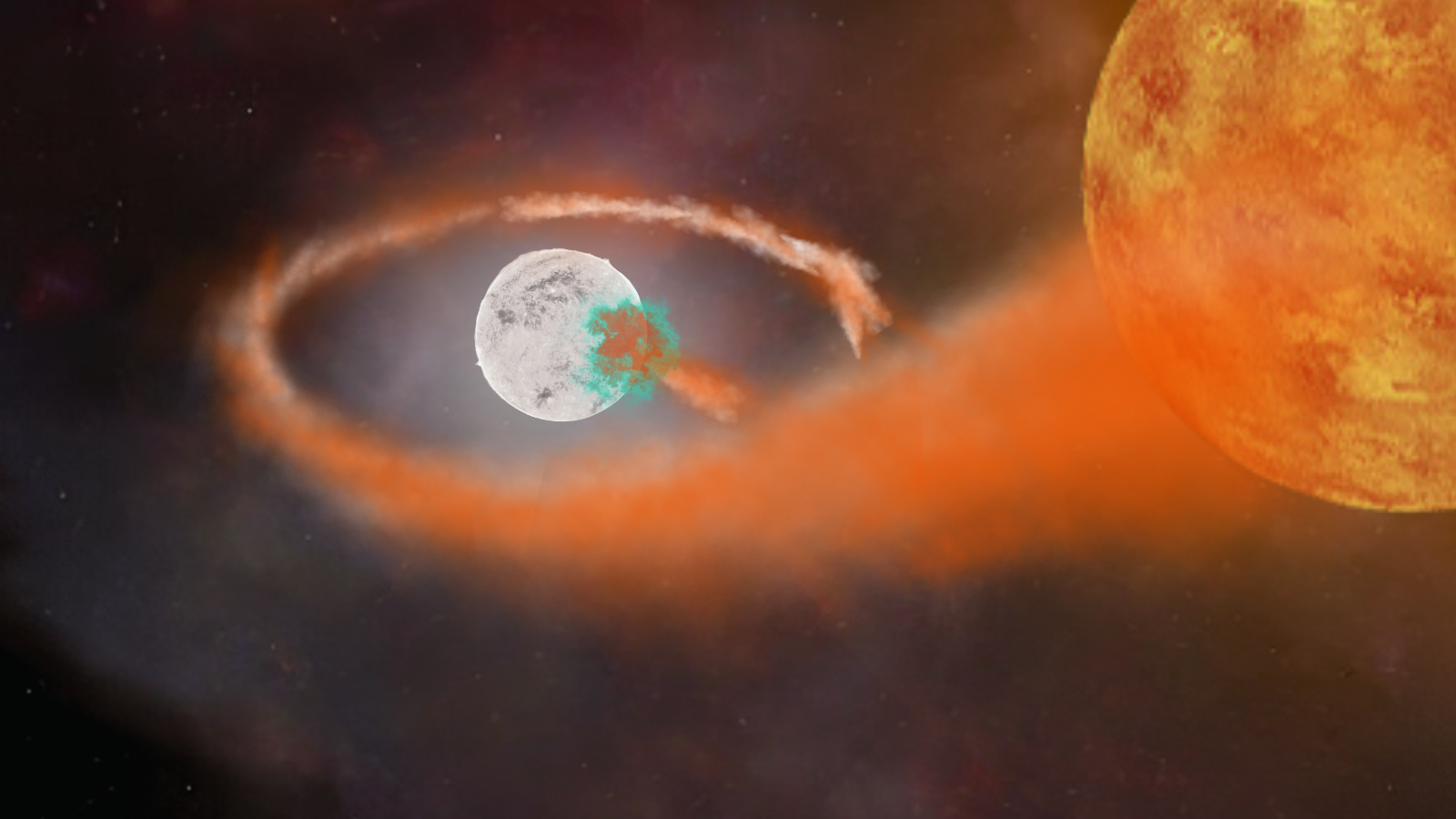
When it comes to hunting for the explosive deaths of massive stars in the early universe, the James Webb Space Telescope (JWST) is quite the cosmic detective. This celestial Sherlock Holmes has found evidence of 80 new early supernovas in a patch of sky as wide as a grain of rice held at arm's length.
Not only is this 10 times more supernovas than have been uncovered before in such early cosmic history, but the sample also includes the earliest and furthest supernova ever seen. It's one that exploded when the 13.8 billion-year-old universe was just 1.8 billion years old.
Data from the JWST Advanced Deep Extragalactic Survey (JADES) program helped a team of scientists find this unprecedented clutch of supernovas, which further includes Type Ia blasts that astronomers call "standard candles" and can use to measure cosmic distances.
Prior to the JWST commencing operations in the summer of 2022, only a handful of supernovas had been found dating back to when the universe was only 3.3 billion years old, equal to around 25% its current age. The JADES sample, however, contains many supernovas that exploded even further back in the past. In fact, some erupted when the universe was less than 2 billion years old.
Related: Peer inside remnants of an 800-year-old supernova and see a 'zombie' star
"The JWST is a supernova discovery machine," team member Christa DeCoursey, a third-year graduate student at the Steward Observatory and the University of Arizona in Tucson, said in a statement. "The sheer number of detections plus the great distances to these supernovas are the two most exciting outcomes from our survey."
The unparalleled infrared sensitivity of the JWST means it is discovering supernovas almost everywhere it looks in the cosmos.
The supernova detective
When light wavelengths travel through the cosmos, the expansion of the very fabric of space stretches out those wavelengths. This causes the light to move further down the electromagnetic spectrum in terms of classification, inching from the bluer end towards the redder end. This phenomenon is known as "redshift."
The longer that light has been traveling through space, the more extreme the degree of redshift it undergoes. Thus, light from bodies located around 12 billion light-years away, like these supernovas, has experienced extreme wavelength lengthening, or "cosmological redshift."
That shifts this supernova light down into the infrared region of the electromagnetic spectrum, a region the JWST is adept at viewing the universe in.

The Hubble Space Telescope had previously allowed astronomers to view supernovas so distant they existed when the universe was in its "young adult" phase. With JADES and the JWST, however, astronomers can observe supernovas when the cosmos is in its "teens" or even "pre-teens."
In the future, scientists hope to look back to the "toddler" phase of the universe — or even back to its cosmic infancy, ideally stumbling upon the deaths of the first generation of massive stars.
To obtain this new cavalcade of supernova observations, the JADES team took multiple images of the same patch of the sky at year-long intervals. Then, they compared the images. Because supernovas are "transients," meaning they brighten and fade over time, observing changes in the images allowed the scientists to distinguish which points of light were indeed exploding stars and which were probably some other phenomena.
"This is really our first sample of what the high-redshift universe looks like for transient science," JADES team member Justin Pierel, a NASA Einstein Fellow at the Space Telescope Science Institute (STScI) in Baltimore, Maryland, said in the statement. "We are trying to identify whether distant supernovas are fundamentally different from or very much like what we see in the nearby universe."

Not all of the supernovas seen by the JADES team were "core collapse" supernovas, triggered when massive stars run out of the fuel supply needed for nuclear fusion in their cores and collapse under their own gravity, birthing a black hole or a neutron star.
As mentioned, some were Type Ia supernovas triggered when stellar corpses called "white dwarfs" cannibalistically feed on material stripped from a companion, or donor, star. This material piles on the white dwarf's surface until it triggers a runaway thermonuclear explosion that completely obliterates the white dwarf.
The light outputs of these events are uniform with the same intrinsic brightness, seemingly regardless of distance. This means they can be used as cosmic rulers to measure distance and also serve as markers to gauge the rate at which the fabric of space is expanding. However, should the intrinsic brightness of Type Ia supernovas change at high redshifts, their utility at measuring large cosmic distances would be limited.
The team's observations of a Type Ia that erupted around 11 billion years ago indicated that its brightness had not varied despite its light undergoing cosmological redshift.
The "pre-teen" universe was a vastly different place than we see today, with far more extreme environments. Additionally, because the universe was mostly hydrogen and helium at these times, astronomers expect to see ancient supernovas triggered by the deaths of stars that contain far fewer heavy chemical elements, or "metals," than the current generation of "metal-rich" stars like the sun.
Thus, comparing these ancient supernovas with massive stars exploding in the local universe could help scientists better understand how stars are enriched during their formation by metals forged by early stars and spread through the cosmos as they died.
"We're essentially opening a new window on the transient universe," Matthew Siebert, leader of the spectroscopic analysis of the JADES supernovas. "Historically, whenever we've done that, we've found extremely exciting things — things that we didn't expect."
The team's findings were presented at a press conference at the 244th meeting of the American Astronomical Society in Madison, Wisconsin, on Monday (June 10).







